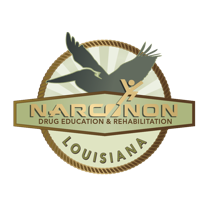Pennsylvania Drug Rehab
Pennsylvania Drug Rehab Centers
 Heroin, cocaine HCl, crack cocaine, and marijuana remained the most available, popular, used, and trafficked illegal drugs in Pennsylvania. However, clandestinely manufactured drugs, such as methamphetamine, crystal methamphetamine, and club drugs, such as MDMA/ecstasy, also remained readily available to users of various ages and socioeconomic backgrounds. OxyContin availability was reported to be decreasing, yet it remained popular in some areas, especially in northeastern Pennsylvania. The diversion of methamphetamine precursor chemicals such as ephedrine, pseudoephedrine, and anhydrous ammonia, as well as the discovery of clandestine laboratories, remained a problem in western Pennsylvania, while significant investigations of internet pharmacies continued.
Heroin, cocaine HCl, crack cocaine, and marijuana remained the most available, popular, used, and trafficked illegal drugs in Pennsylvania. However, clandestinely manufactured drugs, such as methamphetamine, crystal methamphetamine, and club drugs, such as MDMA/ecstasy, also remained readily available to users of various ages and socioeconomic backgrounds. OxyContin availability was reported to be decreasing, yet it remained popular in some areas, especially in northeastern Pennsylvania. The diversion of methamphetamine precursor chemicals such as ephedrine, pseudoephedrine, and anhydrous ammonia, as well as the discovery of clandestine laboratories, remained a problem in western Pennsylvania, while significant investigations of internet pharmacies continued.
Methamphetamine and crystal methamphetamine abuse and trafficking remained a significant problem, as evidenced by an increase in new crystal methamphetamine investigations and a substantial increase in overall methamphetamine seizures from fiscal year 2004 to present.
Most trafficking and distribution were facilitated by a variety of Hispanic and African-American networks that are scattered throughout the state. These groups distributed drugs that were either transported into Pennsylvania via various transshipment locations, or were shipped directly to Philadelphia or other localities. Concealed vehicle compartments, public transportation, airline luggage, as well as freight and parcel services, remained commonly used modes for shipping quantities of drugs. Philadelphia’s street corner distribution networks remained sources of drugs sold to users in Pennsylvania. However, distributors operating in some smaller cities and towns frequently travel either to New York or to lower-level distribution points other than Philadelphia to purchase larger quantities of drugs to sell at the retail level.
Heroin, cocaine HCl, and crack cocaine trafficking organizations remained the Philadelphia Division’s top enforcement priorities, especially as intelligence indicated that these organizations continue to infiltrate the smaller cities and rural areas in the division. The violence, intimidation, and increasing number of overdose deaths remained a significant concern to local law enforcement, as well as community and treatment officials.
